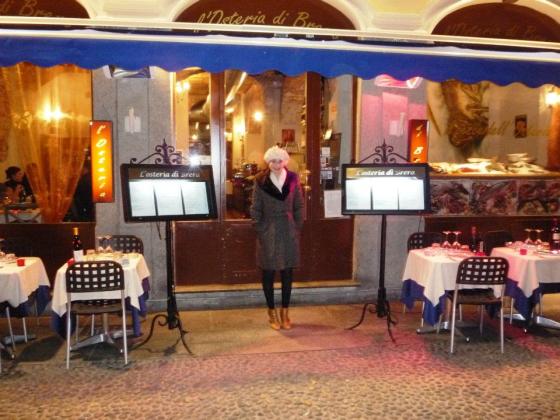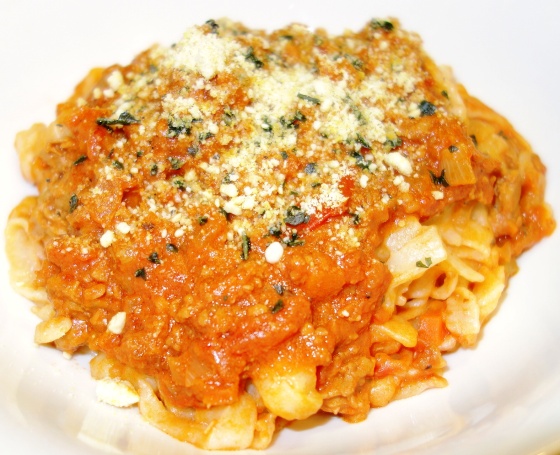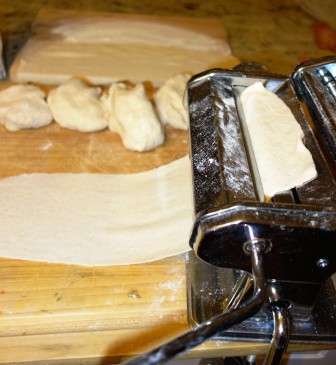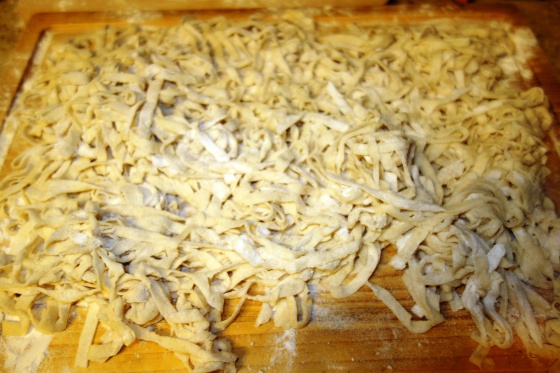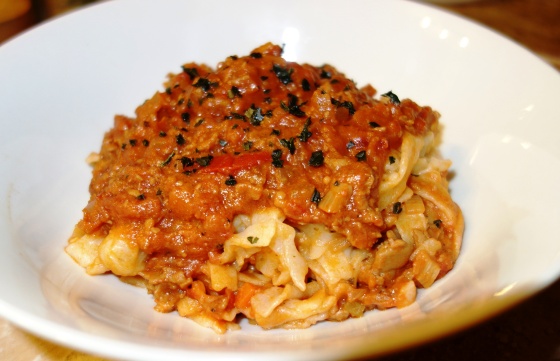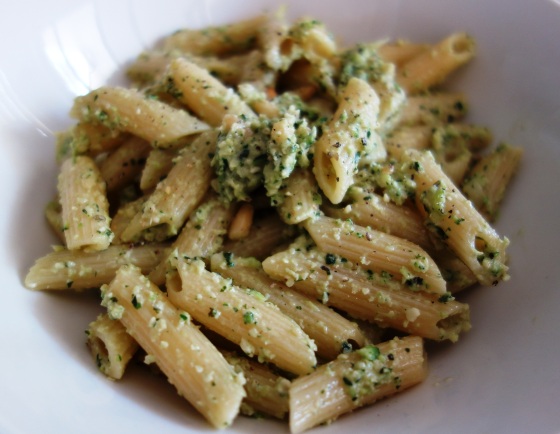Happy Valentines Day everyone! Not making anything special today, but tonight we are going out. Hopefully if Marco finishes early enough we will be going to an Asian Vegan Restaurant. They close at 7.30pm, so fingers crossed we will be going there otherwise not sure what we will do. This post is about last nights dinner.
One thing that I really miss since I have stopped eating meat is Spaghetti Bolognese. I have grown up on this dish. One of my earliest memories is eating this with my hands on my high chair. Then my ears got really itchy, so you only imagine the mess I made. In Australia, Spaghetti Bolognese or Spag Bog has become one of the most loved dish. You will find it everywhere and it is always a favourite with kids. Even if people don’t usually cook Italian food in their house, you can guaranteeing they’ve cooked this dish at home.
To make Spaghetti Bolognese with out meat I have previously tried using Quorn Mince (which isn’t vegan, as it has egg whites) and I have also used TVP Mince. They were both ok, but I was concerned about the health risks of eating these kinds of products. I have also used lentils and other beans, but it never really tastes like a Bolognese sauce. While I was researching other ingredients to make a vegan Bolognese sauce, I came across Mr. Kate, who uses Tempeh for the mince meat, in her Tempeh Spaghetti Bolognese. I have used Tempeh before to make Chef Chloe’s Sweet-and-Sour Meatballs and I was impressed by the meat like texture and flavor. So I thought I would give it a try.
So then I started looking at traditional Italian recipes for Spaghetti Bolognese, so that I could make it the Bologna way. What I found strange was that most of the dishes that were from Italian websites included milk and red wine, some even had butter. These are three ingredients we have never used for this sauce. In fact even when I was in Italy I don’t remember this dish having a milk or cream in the dish. Although this is probably because what we know as a Bolognese in Australia, is in fact a Ragù Sauce. Thinking back I did see Pasta al ragù more often then I did Pasta alla Bolognese.
Last Valentines Day I was in Milan with Marco and we went to a fine dining restaurant, L’osteria di Brera in Brera. I rugged up, but it was absolutely freezing. We never usually ordered first course and second course, but tonight we ordered both. Marco got the Tagliatelle alla Bolognese and it was the most amazing tasting Bolognese we have ever had. We couldn’t figure out what it was that tasted so good. The sauce wasn’t thick, but it coated the pasta nicely and was very rich, but had a slight orange tinge in color. There was no pieces of tomato that you could see, just lots of mince meat.
I love to find out the origins of Italian dishes and I figured this dish would have a rich history. The Bolognese sauce has 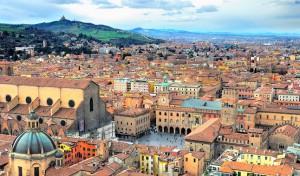 been described as one of the most ‘ill-treated’ and ‘misunderstood’ of all Italian sauces. It’s traditions dates back before before the 16th century and would of originally been known as a Ragù. In fact documents from around this time, held by the Italian Cuisine Academy, state that the original recipe only used beef and seasoning, but there was talk of adding tomatoes. All the regions throughout Italy has their own version of ragù sauce. In Bologna they used beef, Sardinia they used wild boar and in Abruzzo they used lamb. All the regions also had their own types of pasta that they would use. In Bologna they used Tagliatelle to go with their Ragù.
been described as one of the most ‘ill-treated’ and ‘misunderstood’ of all Italian sauces. It’s traditions dates back before before the 16th century and would of originally been known as a Ragù. In fact documents from around this time, held by the Italian Cuisine Academy, state that the original recipe only used beef and seasoning, but there was talk of adding tomatoes. All the regions throughout Italy has their own version of ragù sauce. In Bologna they used beef, Sardinia they used wild boar and in Abruzzo they used lamb. All the regions also had their own types of pasta that they would use. In Bologna they used Tagliatelle to go with their Ragù.
The word ragù is derived from the French ragoût, which means ‘stew’. The meat was originally chopped up finely, as there were no processors back then. For this Bologna version, they originally used finely chopped mixed meats, such as beef, chicken livers and unsmoked bacon; and finely chopped onions, carrots and celery. They would cook it for many hours with wine. The use of tomatoes were controversial back in these times, so when it was added there would of only been a slight hint of it. This sauce was not a tomato sauce containing beef, but rather a beef sauce, which may contain tomato. The sauce was originally used to fill lasagna and was later paired with tagliatelle pasta.
It wasn’t until 17th October 1982 that the Ragù alla Bolognese was registered by the Bolognese Chamber of Commerce. There aim is to preserve Italian cooking traditions. According to the Bolognese Chamber they “carried out long and laborious investigations and conducted studies and research”. Their recipe uses finely cut carrots, onions and celery (also known as soffritto); pancetta, ground skirt steak, dry white wine, homemade tomato paste, milk, heavy cream, salt, pepper and homemade tagliatelle. You can find their recipe for ‘Classic’ Ragù alla Bolognese here.
Today the Ragù alla Bolognese is still a serious topic in Bologna. Although their are purists that stick to the original recipe, 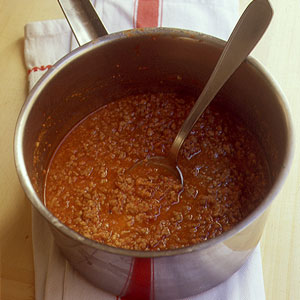 every family has their own version. All the recipes include finely cut carrots, onions and celery; meat and wine. The variations often add cured meats or sausages, milk or cream (controversial ingredient), nutmeg, white wine or other mixtures of meats. One ingredients that is not used is tomato and if it is there, then there will only be a little bit of tomato paste or whole, peeled tomatoes used.
every family has their own version. All the recipes include finely cut carrots, onions and celery; meat and wine. The variations often add cured meats or sausages, milk or cream (controversial ingredient), nutmeg, white wine or other mixtures of meats. One ingredients that is not used is tomato and if it is there, then there will only be a little bit of tomato paste or whole, peeled tomatoes used.
So where did the Spaghetti Bolognese or Spag Bol come from? Well firstly the tomato beef sauce was a later American version of this dish. There are theories that the first Neapolitan immigrants to the New World would serve meat with their pasta to demonstrate their new prosperity. Later as meat became available at a cheap price, many dishes were accompanied with meat. Spaghetti had also become largely available and was very popular. Thus the use of Spaghetti and the additions of lots tomatoes were added to this meat sauce and it became famous in both the Americas and other parts of the world.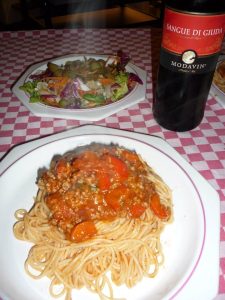
This particular Spaghetti Bolognese on the right was cooked by Marco, in our apartment in Milan. I was studying really hard to get better at Italian, so he had to take the role of chef, cleaner and food runner between classes. We paired it with our favorite wine, translated to The Blood of Judas.
So last night I tried to recreate the Bolognese Sauce. I adapted mine from Tagliatelle alla bolognese from The Italian Kitchen Bible. Unfortunately I didn’t do my research on the ‘traditional’ bolognese sauce, before making this dish. I didn’t realize that tomatoes were not meant to be the star alongside the beef or rather tempeh. This recipe called for soffritto, minced beef, red wine, milk, 1 can of chopped tomatoes (perhaps a hint), sun dried tomato paste and tagliatelle pasta.
For mine I used a packet of tempeh that I crumbled in, worcestershire sauce (to help give the tempeh flavor), merlot and soy milk. I also used nutmeg, as my mum always put this in her bolognese sauce in the restaurant and swears by it. After adding the 1 can of tomatoes, I got some ‘comments’ that my sauce wasn’t saucy enough. I shouldn’t of listened, but I made enough fresh pasta for 8 people, so I thought I may as well add some more. Since I didn’t have any more canned tomatoes, I added passata sauce. So if you want it more authentic, then don’t add that extra sauce. However, if like Marco, you intend on taking this to work and hate dry microwaved pasta, then maybe extra tomatoes in the sauce is a good idea.
For my pasta I didn’t make tagliatelle. I was using my pasta machine, on my own, and just put it through the fettuccine cutter. I made so much that when I cooked it I put too much in the pot and then over cooked it a little. Next time I will do small batches, since it really doesn’t take long too cook at all.
Despite the unauthentic tomato sauciness, this Bolognese sauce was loved by my family. Marco even exclaimed he will forgo beef if I make it like this. I am really happy that the Tempeh worked out as I believe it is a healthier meat substitute. It is a traditional soy product, used as a stable by the Indonesians for 2000 years. If you in Australia, you can find it in Coles. I also liked the addition of wine and soy milk. It gave the tempeh a really nice flavour. I served it with some basil and Vegan Parmesan. This sauce is also gluten free, so you can just prepare either fresh gluten free pasta or dry gluten free pasta with it.
Fettuccine alla bolognese (vegan, gluten free option, nut free)
Ingredients:
2 tablespoons olive oil
1 carrot, finely diced
1 stalk celery, finely diced
1 garlic clove, finely diced
1 onion, finely diced
300-350g tempeh
2 tablespoons vegan worcestershire sauce
150ml red wine (I used merlot)
1 cup soy milk (or other thick plant milk)
400g can of diced tomatoes
2 tablespoons tomato paste
500g passata sauce (optional, for more then 4 serves)
1 teapsoon nutmeg
sea salt & black pepper to taste
fresh basil and vegan parmesan to serve
fresh/dry fettuccine for 4-8 people
Methods:
1. Heat olive oil in a large pot on medium heat. Then add the carrot, celery, garlic and onion. Cook for 8-10 mins or until vegetables have softened, stir often. 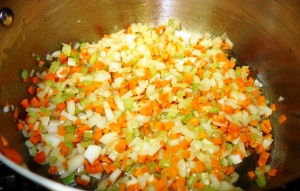
2. Break up the tempeh and add to the pot. Add the worcestershire sauce and cook tempeh with vegetables for 5 mins.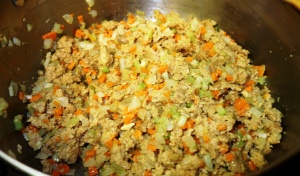
3. Add the red wine and cook until it has absorbed. Stir frequently.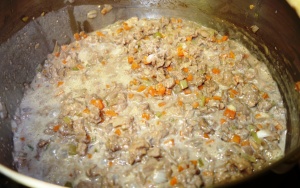
4. Add the soy milk and cook until it has absorbed. Stir frequently.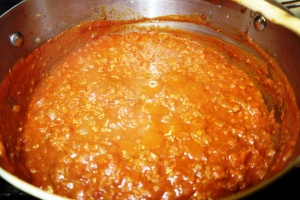
5. Stir in the diced tomatoes, tomato paste and extra passata sauce (if needed).
6. Season with salt, pepper and nutmeg. Bring to the boil, then place on the lowest heat for 45 mins.
7. In the meantime put the pasta water to boil. Make fresh pasta or take dry pasta and cook until al dente.
8. Once pasta is ready, strain and empty the water from the pasta pot, then add half the bolognese sauce to pasta. Serve the pasta and top with some extra sauce.
* Serve with fresh diced basil and vegan parmesan
* Serves 4-8 depending how much pasta you cook and if you add extra passata sauce
References:
Blumenthal, Heston, In Search of Total Perfection.
Lerner, Breno, The Barnacle Goose: and other kitchen stories.
We Are Never Full, 2008, A Tale of Two Sauces – It’s A Traditional Ragu alla Bolognese Deathmatch.
WHFoods, Tempeh.

